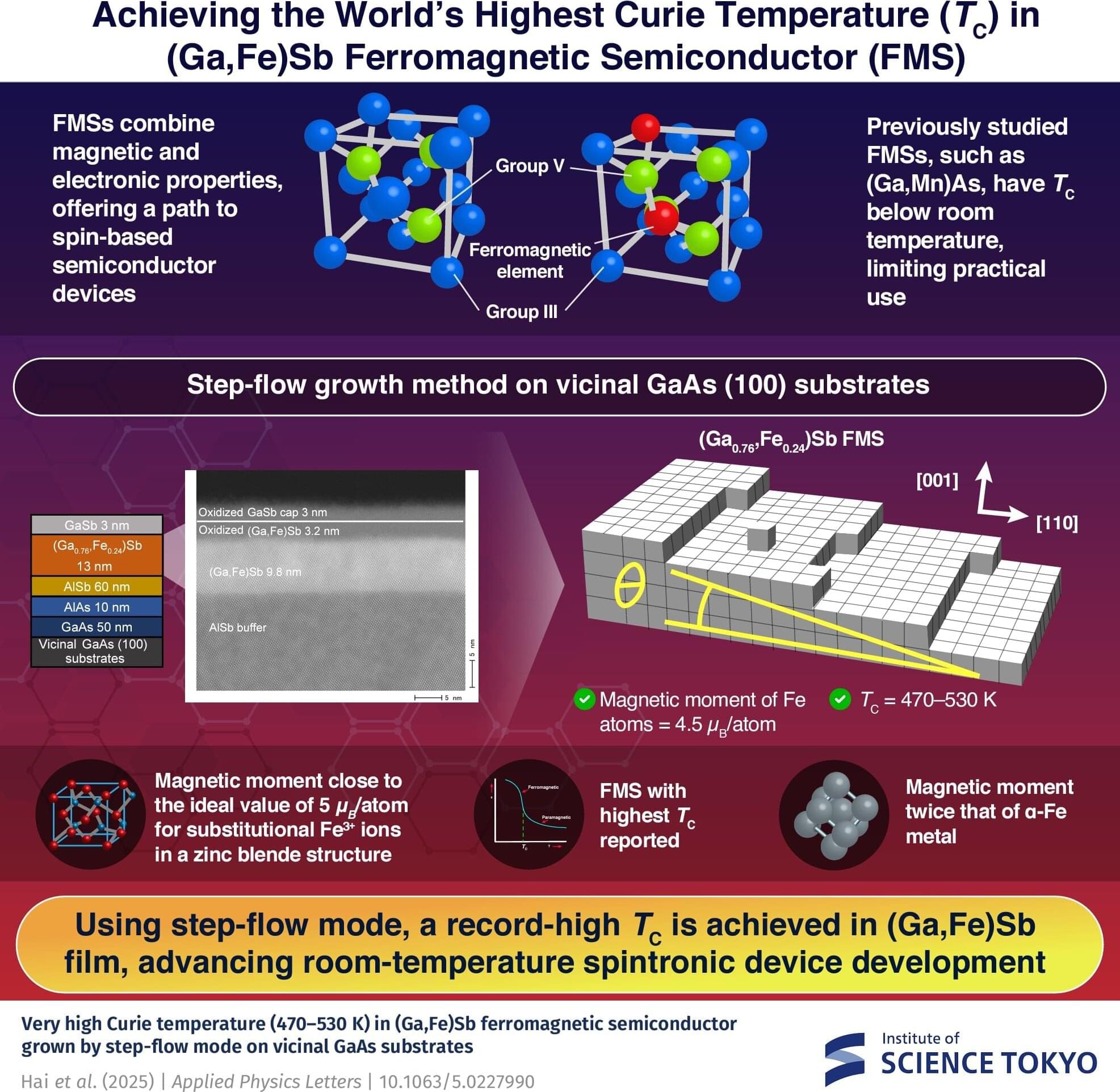Ferromagnetic semiconductors (FMSs) combine the unique properties of semiconductors and magnetism, making them ideal candidates for developing spintronic devices that integrate both semiconductor and magnetic functionalities. However, one of the key challenges in FMSs has been achieving high Curie temperatures (TC) that enable their stable operation at room temperature.
Though previous studies achieved a TC of 420 K, which is higher than room temperature, it was insufficient for effectively operating the spin functional materials, highlighting the demand for an increase in TC among FMSs. This challenge has been featured among the 125 unsolved questions selected by the journal Science in 2005.
Materials such as (Ga, Mn)As exhibit low TC, limiting their practical use in spintronic devices. While adding Fe to narrow bandgap semiconductors like GaSb seemed promising, incorporating high concentrations of Fe while maintaining crystallinity proved difficult, restricting the attainable TC.
